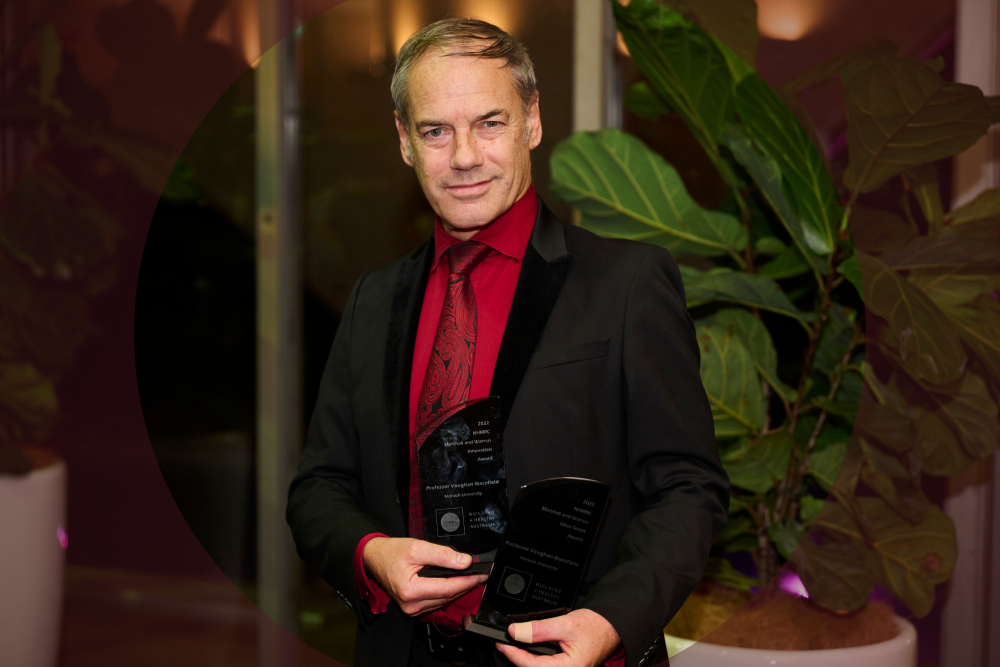Professor Vaughan Macefield is the Professor of Neuroscience in the Department of Neuroscience at Monash University. Professor Macefield specialises in recording from single nerve fibres via microelectrodes inserted into the peripheral nerves of awake human participants. He is best known for developing the methodology for recording the firing properties of single, type-identified, sympathetic neurones supplying muscle and skin, and for developing the methodology for recording muscle sympathetic nerve activity at the same time as performing functional magnetic resonance imaging of the brain. Read on to find out more about Professor Macefield's research, in his own words.
I study the human autonomic nervous system, as well as my research in the human somatosensory system. Much of my work involves inserting fine tungsten microelectrodes through the skin into peripheral nerves in awake participants. With this approach, my team and I can make single-unit recordings from sensory nerve fibres supplying muscles, joints and skin. We can also record from groups of small-diameter nerve fibres (postganglionic sympathetic nerve fibres) supplying blood vessels in muscle, as well those supplying blood vessels and sweat glands in the skin. We know that many diseases feature disturbances in sympathetic nerve activity. Muscle sympathetic nerve activity (MSNA) is elevated in high blood pressure, heart failure, obstructive sleep apnoea and many other conditions. All these diseases have cardiovascular consequences.
Cardiovascular disease is the leading cause of mortality and morbidity, yet the underlying mechanisms by which the normal homeostatic control of blood flow and blood pressure becomes disturbed is poorly understood.
What has been lacking has been a means of directly assessing activity in another branch of the autonomic nervous system, the parasympathetic nervous system. For organs such as the heart, which receive dual innervation, increases in parasympathetic activity counteract the effects of sympathetic nerve activity. However, we have no direct evidence of parasympathetic nerve activity in humans—all we have is inference about its activity obtained from assessing heart rate variability.
The vagus nerve is the largest cranial nerve and most of its territory lies outside the head– after leaving the base of the skull, it travels in the neck to supply the heart, lungs and airways, gut and many associated visceral organs. It is also the largest parasympathetic nerve in the body.
Building on my experience in performing microelectrode recordings from various peripheral nerves, I wanted to see if it was possible to do this in the human vagus nerve. How hard can this be? After all, all we need to do is insert a microelectrode into the nerve into the neck – and we should avoid the internal jugular vein and carotid artery!
This project has been bubbling away in my mind since 1992. Having observed a vascular surgeon replacing an implanted cuff electrode around the vagus nerve in a patient being treated for intractable epilepsy, the seed was planted for wanting to investigate the neurophysiology of the human vagus nerve through intraneural microelectrodes. It was not until 2020 that I had assembled a team, Dr Tye Dawood, Dr Leah Wright and Dr Matteo Ottaviani at The Baker Heart and Diabetes Institute, to try to perform this hitherto unattempted task: to characterize the firing properties of single sensory and motor axons of the cervical vagus nerve in awake human volunteers. However, what was to be a large project at the beginning of 2020 was ruined by COVID.
Nevertheless, we managed to demonstrate in a preliminary publication of the technique that can penetrate the vagus nerve using ultrasound guidance and record from nerve fibres supplying the heart, lungs, and airways.
This Ideas Grant is the culmination of the design of this experimental work. It was not until the end of 2021 that we had accumulated enough data to strengthen the application. I could not believe that my scores had increased so much that it was given the highest overall score in the country! I am delighted to have been recognised by the Marshall and Warren Ideas Grant Award.
I was incredibly honoured to learn that this application was also considered to be the most innovative and potentially transformative Ideas Grant, securing the Marshall and Warren Innovation Award for 2022.
Normally these two awards go to different people, so it is incredibly humbling to have been awarded both!
Now that I am in the Department of Neuroscience in the Central Clinical School at Monash University, I am super excited to be getting this work going. And I will be able to return to that seed planted in 1992: how can we understand the operation of the human vagus nerve?

